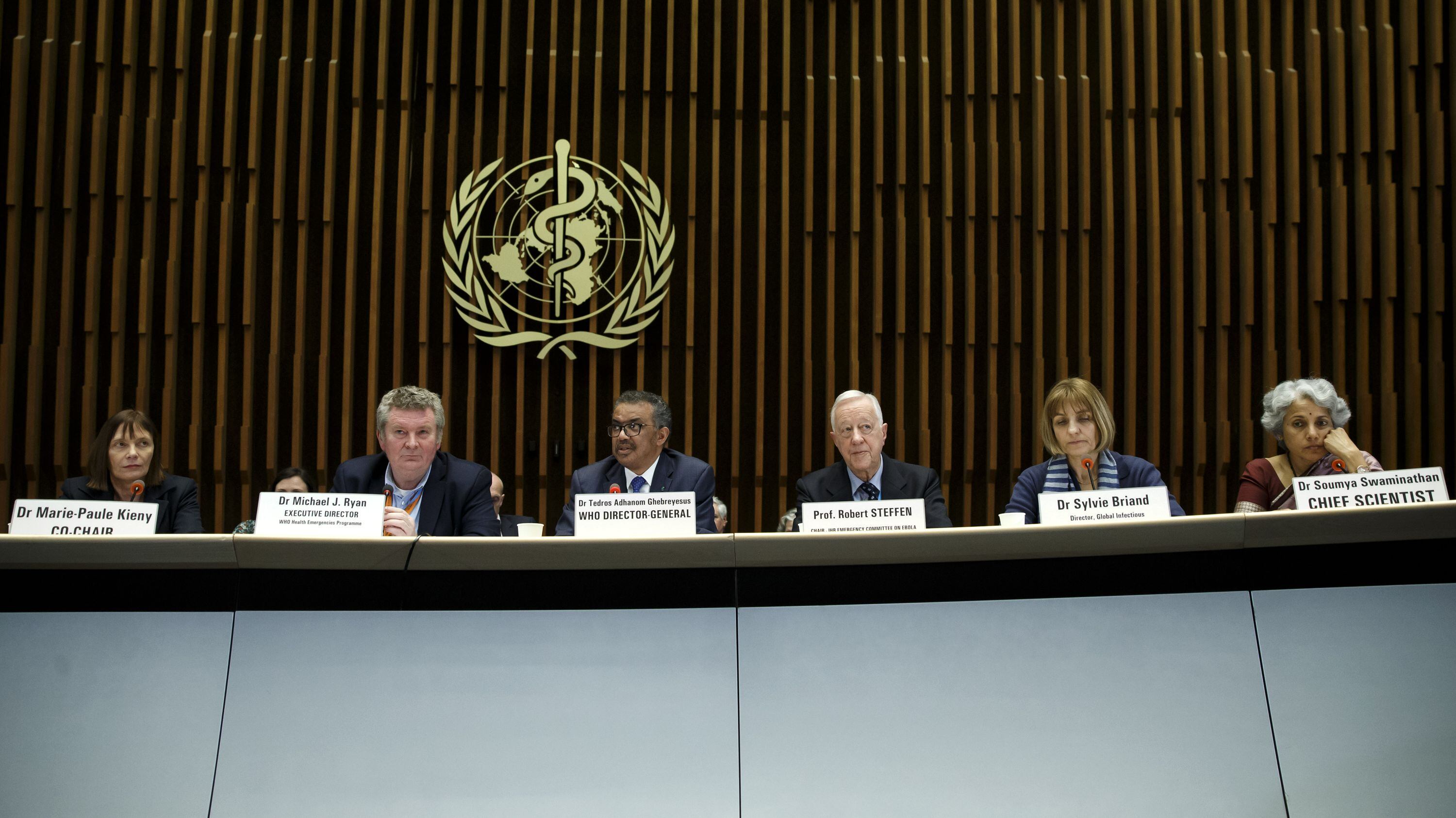Though China has faced global criticism for not sounding the alarm on the coronavirus soon enough, the World Health Organization's Director-General Wednesday called the nation's effort worthy of praise.
In light of the rapid spread and rising death tolls, when asked on a phone call with journalists why the WHO continues to praise China, and whether the body had been pressured to do so, Dr. Tedros Adhanom Ghebreyesus indicated the body's support has stemmed from the drastic actions China has taken, despite the obvious impact to its citizens and economy. For example, the entire city of Wuhan was essentially quarantined.
"When you shut down a city and a province like that, it has consequences" for China and its economy, he said. "What's wrong with acknowledging this?"
The World Health Organization had been criticized for applauding China's quarantine of nearly 60 million people, a move that health experts say is not in line with guidance usually given out by the WHO, though the director said China's actions are working to stymie the spread of the recently named COVID-19 disease.
Another WHO member on the call said in contrast to reports that China failed to report the virus quickly that Beijing "became aware and notified WHO immediately." He said the nation's ability to find "41 cases in the middle of an influenza" season is akin to "picking a needle in a haystack."
Dr. Tedros said the shutdown of Wuhan helped prevent cases from spreading. As of Wednesday, there have been 44,730 cases reported globally, up from 40,000 on Monday. The death toll, reaching 1,114 this morning, has continued to rise, but the rate of new infections has fallen. WHO officials said the increase in deaths comes, in part, due to lifesaving efforts used on patients who became sick weeks ago and are now succumbing to the disease.
Outside of the epidemic's epicenter, less than a quarter of confirmed cases reflect "localized transmission" he said.
The organization confirmed it is "starting work immediately on the most pressing questions" following its two-day conference. The WHO is focusing on infection protection, easy-to-apply diagnostics, potential treatments, and bolstering existing vaccines.
Diagnosing the new virus has proven to be difficult. Two cruise ships that have yet to dock over fears of spreading the novel coronavirus are struggling to contain the virus as well as test patients without also exposing healthcare workers.
In the United States, the Centers for Disease Control and Prevention is having difficulty diagnosing the virus as well. Director of the National Center for Immunization and Respiratory Diseases Nancy Messonnier said a patient who had been evacuated from Wuhan on a government-chartered flight last week was released from a San Diego hospital by mistake.
On Sunday, officials released four patients from a San Diego hospital after they tested negative, but CDC officials said today one of those patients had, in fact, tested positive. Messonnier told reporters "there was probably a mix-up and the original test wasn't negative." She said once patients showing symptoms were placed in isolation and samples were taken for testing, there was a "mishap."
"When running laboratory diagnostics for any disease, anywhere in the world, the ability to match the individual to the specimen is key," she said. "In this situation with this patient it didn't work correctly and the patient was misidentified as negative." She said the issue was found within 24 hours.
While the CDC has been relegated to fighting the disease in the U.S. Messonier said it "stands ready to send staff to affected areas … as soon as we're given the invitation" to travel to China.
She also told reporters that some of the hundreds of kits shipped from the CDC to labs throughout the U.S. and the rest of the world didn't return definitive results. The kits were meant to help officials conduct tests faster than if samples were sent to the CDC, but Messonnier said the trials in some states were “inconclusive." It is not clear how many of them were affected, but she said that the inconclusive returns were discovered through verification processes enacted after the kits were received, not from the testing of actual people.









